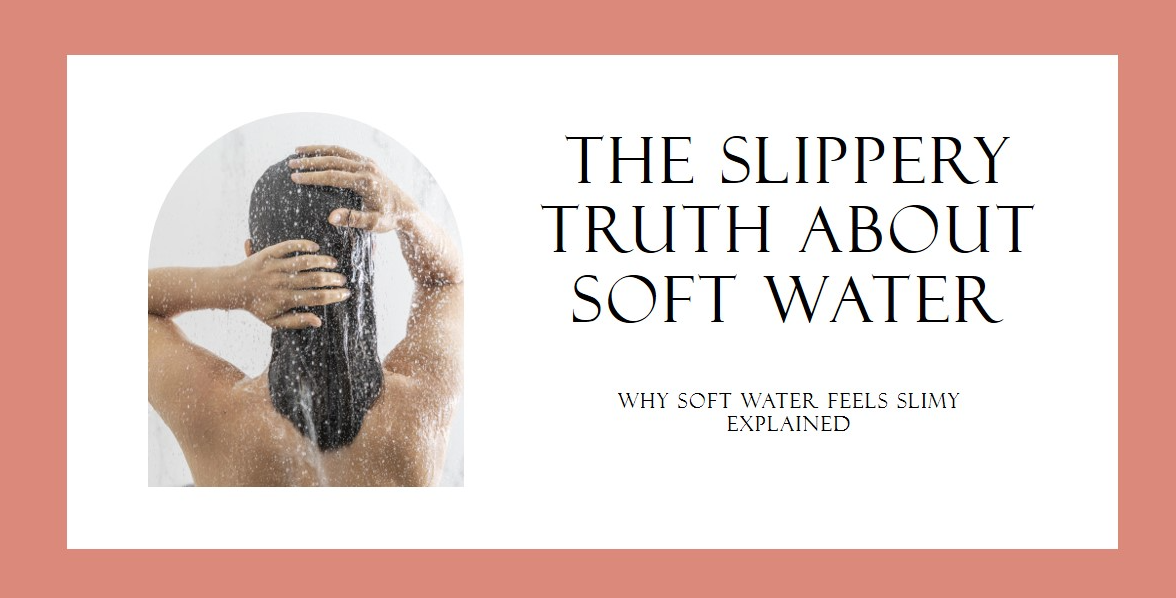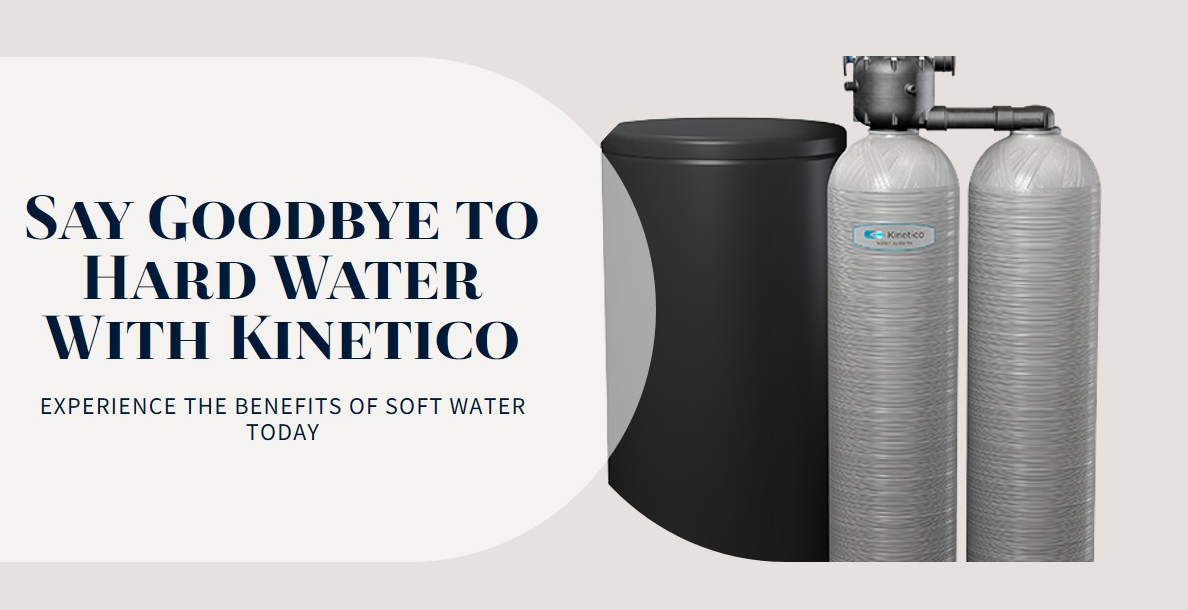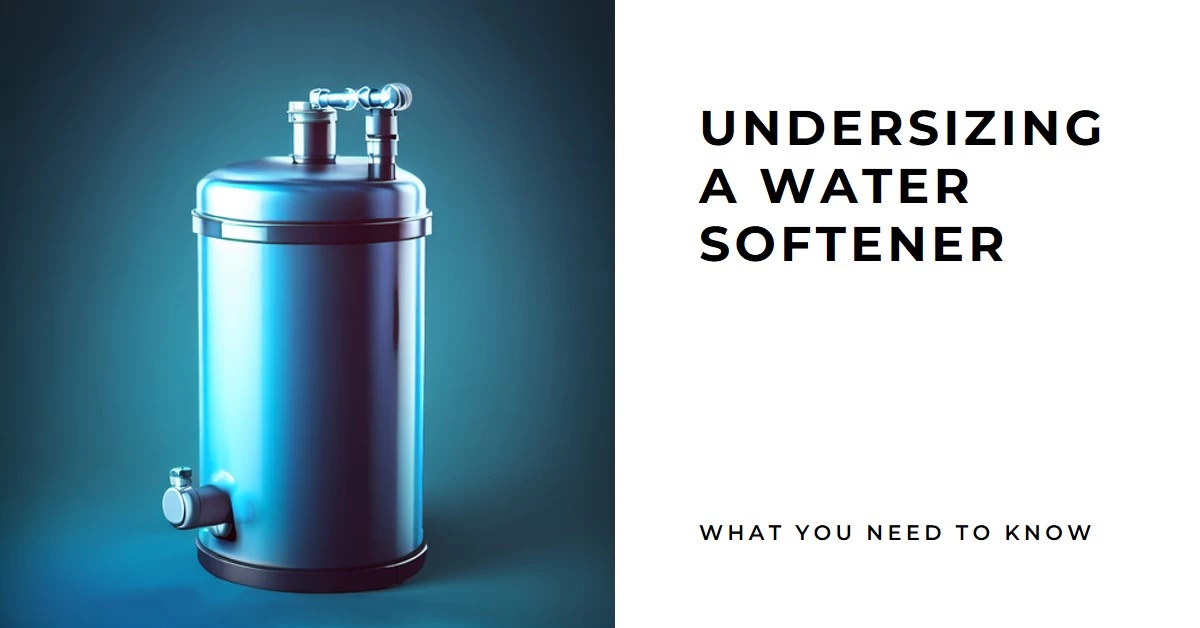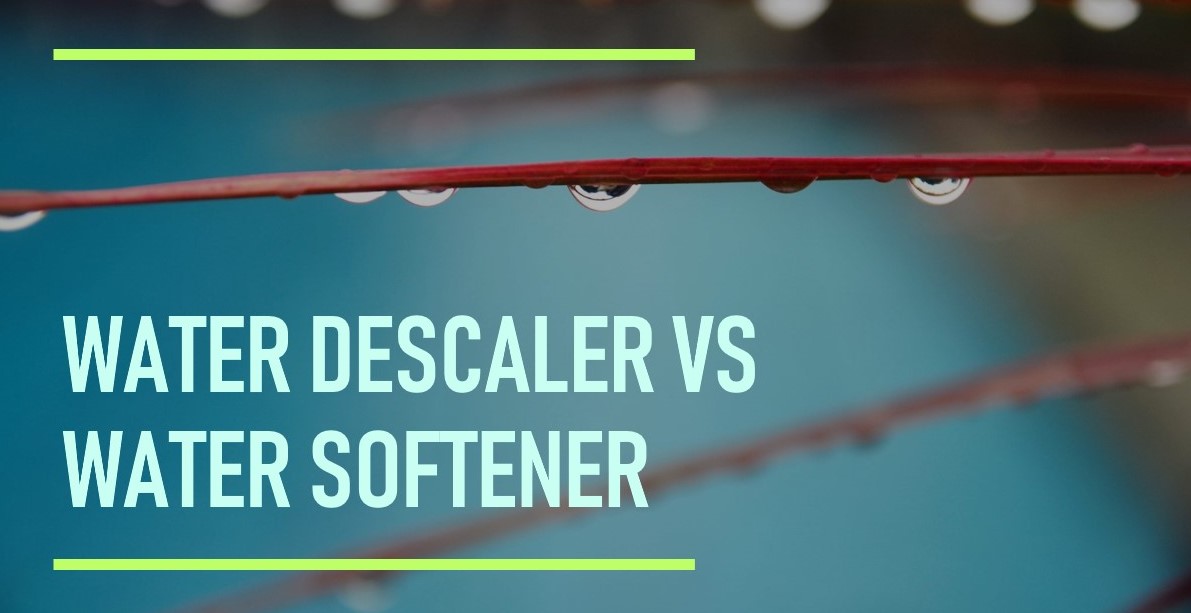If you have recently switched to a water softener or moved to an area with naturally soft water, you may have noticed your water feels slippery or slimy. This strange texture is one of the defining characteristics of soft water. But what causes the slimy feeling, and is it safe?
What Is Soft Water?
Soft water is any water supply that contains low levels of dissolved calcium and magnesium minerals. These minerals are referred to as “hardness minerals”. Water hardness is measured in Grains Per Gallon (gpg) or milligrams per liter (mg/l).
- Hard water has a hardness level higher than 10.5 gpg (180 mg/l)
- Moderately hard water has a hardness level of 3.5-10.5 gpg (60-180 mg/l)
- Soft water has a hardness level lower than 3.5 gpg (60 mg/l)
Hardness minerals give water a “crisp” feel. As the mineral content decreases, water starts to feel increasingly soft and slippery. At very low mineral levels, water can develop a slimy, sticky texture.
Why Does Soft Water Feel Slimy on Skin?
The slippery texture of soft water comes down to chemistry.
Hardness minerals contain a positive electric charge. This charge enables them to interact with and bind to negative skin proteins. The mineral-protein bonds create a smooth lubricating effect.
Soft water lacks these minerals, so there are fewer positive charges to bind to skin proteins. This prevents the formation of the mineral-protein layer that lubricates skin.
As a result, soft water adheres directly to the surface of the skin rather than slipping over it smoothly. This creates an unpleasant sticky, slimy texture.
The same effect occurs on hair. Hardness minerals coat the outside of hair strands, allowing water to run off smoothly. Without those minerals, soft water penetrates hair strands and makes hair feel limp.
Does Soft Water Hydrate Skin Better?
Despite its slimy feel, soft water is generally gentler on skin than hard water. The lower mineral content helps prevent irritation, dryness, and scaling.
However, very soft water is not necessarily more hydrating. While it feels slippery, the water molecules penetrate your skin without binding effectively. Soft water may hydrate skin initially but does not moisturize well.
Using a moisturizing lotion after showering or washing your face can help counteract the drying effects of soft water. An external moisturizer will provide hydrating oils that bind to the skin better than water alone.
Is Soft Water Safe for Bathing and Drinking?
The slippery texture of soft water is harmless in itself. However, the quality of soft water depends highly on the water source and treatment method.
Soft groundwater or naturally precipitated surface water is generally safe. But artificially softened water may contain increased sodium levels from ion exchange systems.
High sodium intake can be harmful in large amounts. Water softened using reverse osmosis or distillation removes sodium along with minerals, producing safer soft water.
Soft water is safe for external use like bathing and washing. But people on low-sodium diets should take care with drinking softened water, especially if an ion exchange system is used for treatment.
How to Reduce the Slimy Feeling of Soft Water
If you dislike the texture of soft water, there are a few ways to minimize the slippery feel:
- Install a calcite filter – Calcite adds hardness minerals back into softened water for a more moderate hardness level.
- Use a moisturizing body wash – Look for a body wash containing oils that will coat the skin and reduce stickiness.
- Rinse hair with apple cider vinegar – The acetic acid in vinegar helps seal the outer hair cuticle.
- Opt for soap over body wash – Soap creates a mild film compared to body wash.
- Pat skin dry after showering – Rubbing with a towel removes more oils and worsens the sticky feel.
- Apply moisturizer immediately after washing – Oils in lotions help counteract the drying effects of soft water.
With a few minor adjustments, the slimy feeling of soft water can be minimized for better hair and skin comfort.
What Causes Hard Water Scaling?
Hard water contains ample amounts of calcium and magnesium, which bind strongly to surfaces. As hard water evaporates, these minerals are left behind, building up in layers to form hard, chalky limescale deposits.
Limescale accumulates on everything the hard water contacts – pipes, fixtures, appliances, and more. Some of the main problems caused by water hardness scaling include:
- Reduced flow – Scale buildup in pipes constricts water flow over time.
- Spotting on dishes – Dishes and glassware develop spots and film from mineral deposits.
- Dry skin/hair – Hardness minerals bind aggressively, stripping away natural oils.
- Detergent inefficiency – More soap or detergent is required to clean effectively.
- Stiff fabrics – Mineral residues coat fabric fibers, resulting in stiffness.
- Scale buildup in appliances – Any appliance using water accumulates mineral scale, reducing efficiency.
Water hardness varies regionally based on the local geology. Hard water is most common in areas with limestone, chalk, or other rock formations containing calcium carbonate.
Hard Water vs Soft Water: Key Differences
| Hard Water | Soft Water |
|---|---|
| Contains high dissolved calcium/magnesium | Contains low dissolved calcium/magnesium |
| Has a “crisp” feel | Has a slippery, slimy feel |
| Forms hard limescale deposits | Does not readily form limescale |
| Requires more soap for cleaning | Forms suds easily with little soap |
| Leaves mineral residue on surfaces | Does not leave mineral deposits |
| Can aggravate dry skin | Less irritating for sensitive skin |
What Are the Benefits of Soft Water?
Installing a water softener or moving to an area with naturally soft water provides several advantages:
- Prevents scale buildup – With no minerals to form deposits, soft water eliminates limescale and spotting issues.
- Saves on cleaning products – Soft water requires far less soap and detergent to form suds for washing.
- Gentler on skin/hair – The lack of coating minerals is less drying to skin and hair.
- Improves lather – Soft water creates sudsy, creamy lather from soaps and shampoos.
- Protects plumbing – Removes mineral deposits from pipes and extends plumbing system lifespan.
- Cleaner laundry – Minerals won’t be left behind to cause stiff, crunchy fabric.
- Easier appliance maintenance – Prevents scale formation in water-fed appliances for easier cleaning.
For households with very hard water, installing a softener provides major benefits by resolving a variety of scaling issues.
What Are the Drawbacks of Soft Water?
However, soft water does come with a few disadvantages:
- Slippery texture – The lack of minerals feels slimy and sticky on skin and hair.
- Corrosivity – Soft water can be mildly corrosive to metal pipes and fixtures over time.
- Potential sodium content – Ion exchange softeners increase sodium levels that may be harmful in excess.
- Spotting on glassware – Very soft water causes spotting from extremely fast evaporation.
- Poor soap/detergent dissolving – Soft water makes it harder for some soaps and detergents to dissolve and lather well.
Finding the right balance of water hardness helps minimize the downsides of very soft or very hard water.
How Does a Water Softener Work?
The most common method for softening hard water is an ion exchange water softener. Ion exchange softeners use resin beads saturated with sodium ions to remove hardness minerals through a process of substitution.
Here is an overview of the ion exchange softening process:
- Hard water enters the softener – Untreated hard water flows into the mineral tank containing resin beads.
- Ion exchange – As the water passes through the beads, the sodium ions detach and are replaced by calcium and magnesium ions which bind to the resin.
- Softened water exits – The water flowing out of the tank now contains sodium instead of hardness ions, reducing its mineral content.
- Regeneration – To flush the system, the resin beads are backwashed with a salt brine solution. This resets the beads by re-attaching sodium ions to their surface.
The resulting softened water supply now has a much lower mineral content and reduced hardness level.
Types of Water Softeners
There are a few different types of water softening systems:
- Ion exchange softeners – The most common type using an ion exchange resin to remove hardness minerals.
- Reverse osmosis systems – Uses a semi-permeable membrane to filter out minerals, including hardness ions.
- Magnetic/catalytic softeners – Claim to alter the structure of minerals to prevent limescale but are often ineffective.
- Salt-free softeners – Use physical media like ceramic beads in place of resin to reduce hardness.
Ion exchange softeners are the most reliable, cost-effective method for homes with very hard water issues.
What is The Typical Cost of a Water Softener?
The price of a water softener system varies based on:
- Type – Ion exchange softeners cost $200-$1000 depending on capacity and features. Reverse osmosis and salt-free softeners cost $1000-$2000.
- Size – Capacity matched to household water usage. Typical costs:
- 2 people – $250-$500
- 3-5 people – $500-$800
- Large households – $800-$1200
- Features – Basic vs premium softeners with automation, wifi, efficiency.
- Installation – Plumbing work needed for installation and setup.
On average, expect to invest $500-$1500 for a properly sized softener system and professional installation. This upfront cost usually pays for itself within 1-2 years.
Maintaining a Water Softener
To keep a water softener working properly:
- Add salt – Top up the brine tank with salt pellets monthly. Use only salts designed for softeners.
- Test hardness – Periodically test incoming and outgoing water hardness to ensure the softener is working effectively.
- Change resin beads – Resin beads wear out over 5-10 years and need replacement.
- Clean resin tank – Use resin tank cleaner 2-4 times per year to prevent scale or sediment buildup.
- Sanitize system – Sanitize all parts of the softener yearly to control bacteria growth in the tank and lines.
Regular maintenance keeps a water softener functioning optimally for the longest lifespan.
Common Water Softener Problems
Some common water softener issues include:
- Low water pressure – Clogged resin beads or control valve. Perform backwash and clean resin tank.
- Salt bridge – Hardened salt creates a bridge blocking water contact with resin. Break up the bridge with a broom handle.
- No soft water – Exhausted resin beads. Replace resin bed.
- Leaking – Damaged O-rings or loose fittings. Check and replace O-rings, tighten fittings.
- Control error – Circuit board, motors, or sensors malfunctioning. Troubleshoot with manufacturer.
- Softener not regenerating – Programmed improperly or mechanical issue. Adjust settings, inspect components.
Professional repairs may be needed in some cases for optimal results.
Choosing the Best Water Softener
Factors to consider when selecting a water softener:
- Household size – Calculate daily water usage to size the system correctly
- Water hardness – The higher the hardness, the larger the system capacity needed.
- Features – Compare warranty, efficiency, salt usage, convenience factors
- Reliability – Choose an established brand with a reputation for durability
- Cost – Consider both upfront cost and ongoing salt/maintenance costs
- Regeneration method – Metered models regenerate based on actual use instead of on a timer
Choosing the appropriately sized system from a reputable brand provides the best results and value over time.
The Bottom Line
While soft water feels unnatural at first, you will quickly adjust to the slippery texture and begin reaping the many benefits soft water provides. Taking a few steps like rinsing hair with vinegar or applying moisturizer after showering can help minimize the slimy feeling.
Make sure to maintain the softening system properly for a continual supply of scale-free water. Soft water resolves a wide range of problems caused by hard water, resulting in major advantages for your home.
Key Takeaways:
- Soft water lacks hardness minerals, causing it to feel slimy and sticky on skin and hair.
- The lack of positive mineral ions prevents the smooth, lubricating effect created by hard water.
- Soft water is gentler on skin and prevents hard water scaling, despite the slimy texture.
- Ion exchange softeners work by swapping hardness minerals for sodium ions to reduce water hardness.
- Soft water provides benefits like soap savings and scale prevention but can increase corrosivity.
- Properly maintaining your softener ensures optimal performance and lifespan.





